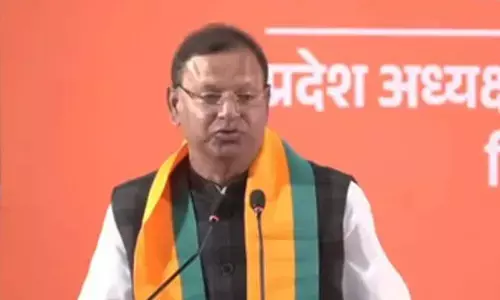A steady shift from fossil fuels to clean energy

ADB Highlights an 85% Cut in Fossil Fuel Subsidies in Latest Report
In a world bound to the grip of fossil fuels, India has taken steps toward a different path. With a bold net-zero target set for 2070, the nation is reimagining its approach to energy. As noted by the Asian Development Bank in its recent Asia-Pacific Climate Report, India is shifting its focus from an unsustainable dependence on fossil fuel subsidies to fostering clean energy. Guided by a “remove, target, and shift” strategy, India steadily whittled down its fossil fuel support, opening doors to new investments in solar power, electric vehicles, and a stronger energy grid. India’s resolve in reforming fuel subsidies has proven transformative, slashing subsidies by a striking margin between 2014 and 2018.
This shift was no small feat. It was achieved through careful steps, including the gradual phasing out of petrol and diesel subsidies from 2010 to 2014, followed by measured tax hikes on these fuels up to 2017. These moves, though bold, were made to create fiscal breathing room for renewable projects, allowing the government to channel funds into clean energy initiatives at an unprecedented scale. With subsidies for solar parks, distributed energy solutions, and state-owned enterprises now steadily rising, India’s path forward reflects its purpose and commitment to clean power, setting a strong example for others looking to shift toward a more resilient energy future.
Climate Report
The Asia–Pacific Climate Report highlights the urgent need for adaptation measures and emphasizes the importance of mobilizing resources to support the region’s most vulnerable populations, ensuring that they are better prepared to face the challenges brought on by climate change. This report serves as a vital resource for understanding the pressing issues at hand and guiding effective climate action in the region.
The Report underscores the effectiveness of India’s “remove, target, and shift” approach in reducing fiscal subsidies in the oil and gas sector by 85%. The findings also reveal how strategic tax measures, including the cess on coal production, have funded renewable energy projects and infrastructure improvements. Overall, these insights illustrate India’s commitment to transitioning toward a more sustainable energy future while addressing the challenges of climate change.
India’s fossil fuel subsidy reform
Since 2010, India has steadily reformed its fossil fuel subsidies, adopting a “remove, target, and shift” approach. This structured approach involved carefully adjusting retail prices, tax rates, and subsidies on select petroleum products, which collectively reduced fiscal subsidies in the oil and gas sector by 85%, from a peak of $25 billion in 2013 to $3.5 billion by 2023.
A significant step in this journey was the gradual phasing out of petrol and diesel subsidies, coupled with incremental tax hikes. These reforms created fiscal space for greater government support in renewable energy initiatives, electric vehicles, and critical electricity infrastructure. From 2014 to 2017, tax revenues were further boosted by rising excise duties on petrol and diesel, implemented strategically during a period of low global oil prices. The additional revenues were then redirected toward targeted subsidies that expanded access to liquefied petroleum gas (LPG) for rural communities, addressing both environmental goals and social welfare.
India’s fossil fuel subsidy reforms mark a decisive shift, channelling resources toward sustainable energy and laying the foundation for cleaner energy alternatives.
Role of Taxation
From 2010 to 2017, the Government of India implemented a cess on coal production and imports, which was crucial in financing clean energy initiatives. Approximately 30% of the collections from this cess were allocated to a national clean energy and environment fund, supporting various clean energy projects and research. This tax significantly bolstered the budget of the Ministry of New and Renewable Energy, providing essential funding for initiatives such as the Green Energy Corridor scheme and the National Solar Mission. These programs were instrumental in reducing the cost of utility-scale solar energy and funding numerous off-grid renewable energy solutions.
Major Schemes
India is advancing toward a sustainable energy future with initiatives like the National Green Hydrogen Mission, PM-KUSUM scheme, and PM Surya Ghar: Muft Bijli Yojana. These programs aim to boost renewable energy production, enhance energy access, and empower farmers while reducing dependency on fossil fuels. Together, they signify India’s commitment to a cleaner energy landscape.
Through key initiatives such as the National Green Hydrogen Mission, PM-KUSUM, and various production-linked incentive schemes, India is not only striving to meet its ambitious net-zero target by 2070 but also fostering a resilient and inclusive energy landscape. These sustained efforts in promoting renewable energy are crucial in addressing climate change challenges, stimulating economic growth, and creating job opportunities.



















